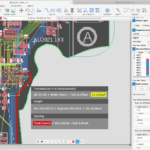ASIA ELECTRONICS INDUSTRYYOUR WINDOW TO SMART MANUFACTURING
Simulation Tools Empower Smart Headlight Technology
The simulation tools of ANSYS, Inc. has enabled Ford Motor Company to accelerate the development of its predictive smart headlights and improve nighttime driving for consumers. Engineers at Ford employs ANSYS’ high fidelity, physics-based lighting capabilities to optimize and validate headlight performance virtually. This significantly reduces dependency on costly, real-world night drives.
Nighttime and low-light conditions decrease visibility for drivers, making it harder to react to wildlife, pedestrians, and sudden turns. Ford is testing a new predictive smart headlight system that uses real-time location data to direct beams into upcoming turns, allowing motorists to better respond to hazards.
However, as advanced driver-assistance systems (ADAS) permeate more automotive features and increase functionality, car makers need to make an ever-increasing number of scenarios. This makes physical testing and validation a difficult and complex process.
Simulation Tools Play Critical Role
To reduce reliance on costly and time-consuming building and testing physical prototypes, Ford leveraged on Ansys’ AVxcelerate Headlamp solution to optimize performance in a virtual environment. Ansys’ vehicle headlight solution features real-time, physics-based optical simulation and driver-in-the-loop functionality to replicate the physical world with a high degree of predictive accuracy. Empowered by a realistic virtual night driving experience, engineers at Ford can rely on insights gained from simulations to improve product design long before physical headlamp prototypes are available.

“The predictive accuracy of Ansys simulations yield a variety of significant benefits for our team, from being able to engineer for edge case scenarios to less late-night road tests,” said Michael Koherr, Advanced Lighting Research Engineer at Ford of Europe. “With the ability to truly gauge system performance in a virtual environment, we’re able to identify opportunities to improve our product well before entering the physical testing stage. Simulation has and will continue to play a critical role in our quest of making driving at night as safe and easy as during the day.”
“Ford’s intelligent headlights represent an excellent case of how simulation, innovation and safety go hand-in-hand,” said Shane Emswiler, Senior Vice President of Products at Ansys. “With our solutions, engineers at Ford can quickly test its system under countless scenarios and lighting conditions to help ensure that the first physical prototype is in excellent working condition. Ultimately, that means Ford’s technology can spend less time as a concept and more time on the road, reducing accidents and saving lives.”




